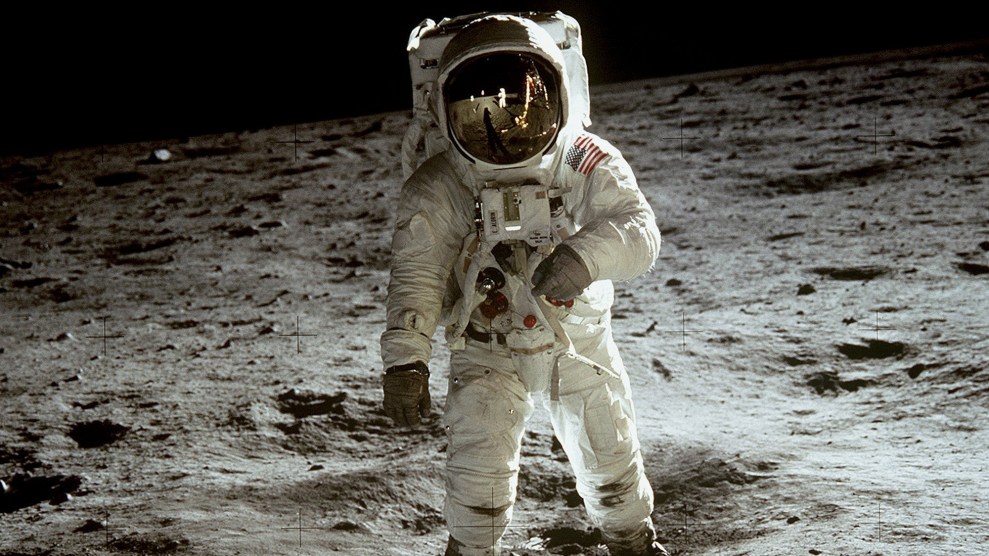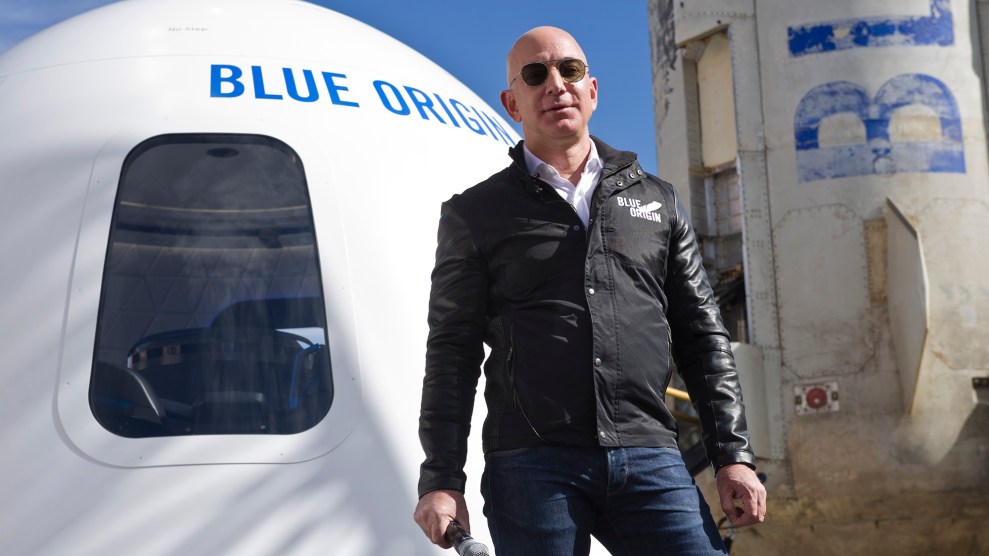
JNeil Armstrong/Nasa/Atlas Archive/UPPA via ZUMA Press
There are some troubling policies and practices from the Trump years that President Joe Biden has chosen to carry forward, even as he’s aggressively worked to undo others. In at least one case, though, there’s an unrealistic and expensive Trump-era goal that Biden is pushing forward with, even in opposition to his own experts: A 2024 human landing on the moon.
That’s according to a new piece published Friday by Marina Koren in The Atlantic. Koren convincingly argues that the proposed lunar landing in late 2024—which the Trump administration saw, at least partially, as a political feather for Trump’s cap, along with the creation of Space Force—is clearly behind schedule. Delays in the development in the modern redesign of the spacesuit, along with budget overruns coupled with budget shortfalls, may make the 2024 “no longer a realistic target,” Steve Jurcyzk, the acting NASA administrator in February, told Ars Technica. As such, Koren argues, the Biden administration “could slough off the 2024 goal easily enough.”
Instead, the administration is pushing forward with the 2024 goal, even if “it’s a stretch” and “a challenge,” according to current Administrator Bill Nelson.
Koren points out that Biden has plenty to deal with—the pandemic, infrastructure, climate change—and noted in an earlier piece that 2018 polling found the public preferred that NASA’s main focus be climate research. In 2019 just 8 percent of Americans said a moon landing should be the agency’s top priority, with a majority supporting climate research and national security-related missions.
Perhaps the answer has more to do with national security than national pride. On the same day that Biden met with Russian President Vladimir Putin in Geneva to discuss election meddling, human rights, and ransomware, the Chinese government was showing off its success in getting its new space station operational. Former Vice President Mike Pence said in 2019 that there was a new “space race” afoot akin to the 1960s, “and the stakes are even higher.”
Even still, NASA’s internal investigator said this week that the 2024 landing is “not feasible.” Koren reported that a NASA spokesperson said that the budget and timeline for the mission are being evaluated and that the agency “will provide an update later this year.” Safety is a priority, the spokesperson said, “and NASA will put humans on the moon when it is safe to do so.”















